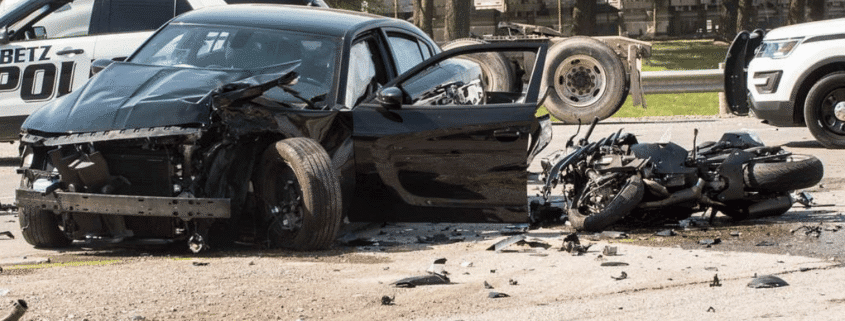After a Fatal Car Crash in Utah: Real-World Legal Guidance For Families
After a fatal crash in Utah, a personal representative brings a wrongful death claim for all heirs. Most cases must be filed within two years. Death bypasses Utah’s no fault threshold. Comparative fault of fifty percent bars recovery. Legal help matters.
Losing someone in a crash stops everything. Grief hits first. Then calls from insurers, funeral bills, and papers you have never seen before. This guide explains your legal options in plain Utah terms.
You will learn who can bring a claim, what deadlines apply, how fault rules work, and what compensation may be available. You will also see simple steps to protect your family’s rights without adding stress to an already hard time.
Key Things You Should Know
- One wrongful death claim covers all legal heirs.
- Most cases must be filed within two years.
- Death qualifies to sue under Utah’s no fault law.
- At fifty percent fault, recovery is barred.
- Wrongful death noneconomic caps do not apply in med-mal death.
- Punitive damages need clear and convincing proof, with a DUI exception.
First 72 Hours: Steps That Help Your Future Claim
When a deadly crash happens, nobody expects the family to become investigators. A few small steps do make a difference later.
Gather and save
Keep a folder for funeral bills, medical records, police case number, and contact info for witnesses. Ask a friend to help keep everything in one place.
Pause on quick settlements
Insurers may call early. Be polite, but avoid recorded statements and do not agree to any release until you have legal advice.
Preserve evidence
If you can, save photos, crash scene videos, and texts about what people saw. Your lawyer can send letters that tell the other side to keep vehicle data and camera footage.
Open the estate
A probate court usually appoints a personal representative. That person has the authority to bring the wrongful death claim for all heirs. A lawyer can help set this up if it is not already in place.
These simple moves protect your options without putting extra weight on your shoulders.
Utah Wrongful Death Basics: Who Files, and Why Only One Case?
Utah law allows one wrongful death case for the benefit of all legal heirs. The action is brought either by the heirs or by the personal representative of the estate. And it covers everyone who qualifies as an heir under the statute. Filing one case avoids duplicate lawsuits and helps the court divide any recovery fairly.
Utah also recognizes a separate survival claim. That claim belongs to the estate and covers losses suffered by your loved one between injury and death, such as conscious pain and unpaid medical bills. In some cases there are hours or days between the crash and passing, and a survival claim may add value. Your attorney can file both claims together so the court sees the full story.
The key is coordination. One lawsuit, properly set up, can present both wrongful death and survival losses while honoring Utah’s rules about who may file and how.
Time Limits: The Two-Year Rule and Shorter Deadlines With Government Involved
Most wrongful death cases in Utah must be filed within two years of the date of death. Missing this deadline can end the claim, even when fault is clear. Courts apply this rule strictly, so it is smart to speak with a lawyer early and get a timeline in writing.
If any city, county, the State of Utah, UDOT, a school district, or another public entity may be at fault, there is an extra step. You must file a formal notice of claim within one year of the claim arising and follow the service rules set by statute. After the government denies the claim or sixty days pass, you can file suit, but the timing is tight. Your lawyer will prepare and deliver the notice to the correct office so it counts.
Bottom line: the standard deadline is two years, but a government case adds a one-year notice that cannot be skipped.
Fault Rules: How Utah’s Comparative Negligence Affects Recovery
Utah uses a modified comparative negligence system. If your loved one is found less than fifty percent at fault, the recovery is reduced by that share. If the fault reaches fifty percent or more, the recovery is barred. Because a few percentage points can flip the outcome, careful investigation matters.
What does this mean in practice? Your lawyer will gather the police report, scene photos, skid data, black-box downloads, and phone records. He will then work with a reconstruction expert if needed. The aim is to counter blame-shifting by showing what really happened. When an insurer argues that the decedent “should have seen” the other driver, expert timing studies and signal data can make the difference. Local knowledge of Utah roadways and agencies helps speed this work.
If another driver was clearly speeding, drunk, or texting, fault analysis is often simpler and leverage at the table is stronger. Still, your team should prepare for a tough comparative fault fight.
Utah’s No-Fault Law and the Death Exception
Utah is a no-fault state for auto injuries. In most injury cases, you cannot claim pain and suffering unless medical bills hit a threshold or you meet a serious injury category. Death is one of the clear exceptions. When a crash causes a death, the family can sue the at-fault driver even if the medical bills do not reach the normal threshold.
This matters because some fatal crashes involve a fast loss of life or a loved one who passes at the scene. In those cases, the medical bills may be small, but the law still allows a direct claim for full wrongful death damages. Your car accident Utah lawyer will also coordinate with the PIP insurer to make sure funeral benefits and other no-fault benefits are paid quickly while the liability claim moves ahead.
Knowing how the no-fault rule and the death exception fit together keeps the case on track from day one.
What Compensation Can a Family Seek After a Fatal Crash?
A wrongful death claim seeks to replace financial support and honor the human loss. Typical categories include:
- Funeral and burial costs
- Final medical bills
- Lost income and benefits from the person’s absence
- Loss of care, guidance, and companionship for the heirs
In Utah medical malpractice death cases, the Utah Supreme Court struck down the med-mal noneconomic cap as applied to wrongful death, which lets families seek full noneconomic damages in that subset of cases. Outside medical malpractice, Utah does not impose a general wrongful death noneconomic cap.
Punitive damages can apply when conduct is outrageous, such as extreme drunk driving. Utah law requires clear and convincing proof for punitive damages in most cases, but there is a special DUI rule that eases the burden. Your lawyer will explain if punitive damages fit your facts.
A survival claim, brought by the estate, can also recover the decedent’s own losses between injury and death.
What Drives Case Value: Facts, Proof, and Coverage?
Families often ask what the claim is “worth.” There is no chart that fits every case. Value turns on several things that your lawyer can measure and improve.
Liability strength
Strong proof of fault, such as a DUI arrest or clear video, increases value. Weak proof lowers it. Comparative fault fights can move numbers up or down fast.
Earnings and benefits
A solid record of income, benefits, and career path helps experts project future loss. If your loved one stayed home to raise children or care for family, the value of those services can be shown with data and testimony.
Family story
Photos, messages, and statements from friends and community members show the care and guidance your loved one gave. This proof supports non-economic damages for the heirs.
Insurance and assets
Policy limits often set the ceiling in auto cases. Stacking policies, finding employer coverage for a work driver, or locating umbrella policies can change the outcome. Skilled Utah car accident attorneys know where to look.
Filing and Suing After a Fatal Car Accident: From Claim To Court
A typical path looks like this:
- Investigate and notify: Your lawyer collects records, tells insurers to preserve evidence, and identifies every possible policy.
- Open the estate and name heirs: The court appoints a personal representative, and the wrongful death action is brought for all heirs in one case.
- Calculate losses: As part of the model, economists and other experts use lifetime earnings and the value of household services. Doctors may address the cause of death and any suffering before passing for a survival claim.
- Pre-suit demand: If liability is clear and coverage is known, a detailed demand may lead to fair settlement.
- File suit: If talks stall, filing allows subpoenas, depositions, and expert discovery. Deadlines control this stage, so your team manages the calendar. The two-year statute applies in most cases, with special one-year notice rules if a government entity is involved.
This plan keeps pressure on the insurer while you focus on family.
Sample Scenarios: How Facts Change Outcomes
To make the process real, here are example scenarios based on common Utah crash patterns. These are not promises, only teaching tools.
Drunk driver, clear video
A repeat DUI offender runs a red light and strikes a family car. Video confirms fault. Punitive damages may be on the table along with full wrongful death damages.
Left-turn dispute
During a flashing yellow light, a driver turns left and collides with a motorcycle. It is claimed that the rider was speeding by the defense. Reconstruction of speed, distance, and timing helps reduce any fault assigned to the rider. The case value moves with the fault split.
Government vehicle
A city truck backs out of a yard into traffic. In a lawsuit, you must file a notice of claim within a year, and strict rules must be followed. In the case of a missed deadline, the case can be thrown out.
Hire the Best car accident Utah lawyer: Local Help That Meets You Where You Are
When a case involves a life, you need someone steady, present, and local. A car accident lawyer knows the courts, understands our no-fault rules and fault limits, and speaks the language of Utah juries.
Local teams move fast on police records and roadway video. They know the doctors and experts who carry weight in our courts. Most of all, the right Utah car accident attorney takes the pressure off your family so you can grieve and heal while the legal work moves forward.
Families want straight talk and real action. Chris Cockayne and his team at Cockayne Law focus on careful case building and clear updates. They gather the proof early, line up the right experts, and prepare each claim as if it will go to trial. That approach gives strength in settlement talks.
Final Thoughts
You do not have to carry both grief and legal stress. Utah law gives your family clear rights, and there is a path through it. Deadlines are real, fault rules matter, and smart evidence work can protect the value of your claim. Talk with a car accident Utah lawyer as soon as you are ready.
FAQs
Can punitive damages apply?
Sometimes. Utah law requires clear and convincing proof for punitive damages, with a different, lower burden in DUI cases. Your lawyer will assess whether punitive damages fit your facts.
What if the insurer blames my loved one?
Utah’s comparative fault rule applies. If fault is under fifty percent, recovery is reduced. At fifty percent or more, recovery is barred. Strong crash analysis and expert work can counter blame-shifting.
What is a survival claim, and is it different from wrongful death?
A survival claim belongs to the estate for the decedent’s own losses between injury and death. The heirs of the deceased must file a wrongful death claim to recover their losses. Both can be brought together in one lawsuit.
How long do these cases take?
It varies. Strong liability and clear coverage may lead to a settlement within months. If fault is disputed or damages are large, litigation can take longer. Your attorney should give you a plan and regular updates.









